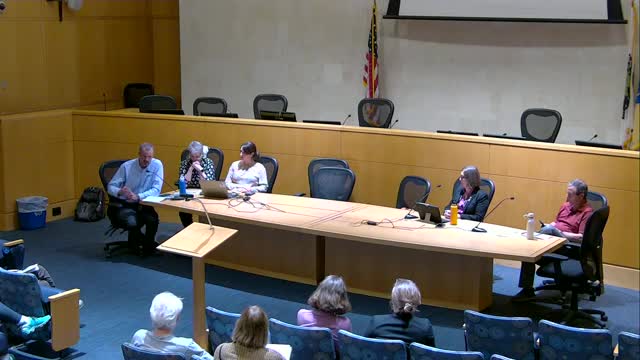Princeton pushes for stormwater utility to tackle infrastructure crisis
October 30, 2024 | Princeton, Mercer County, New Jersey
This article was created by AI summarizing key points discussed. AI makes mistakes, so for full details and context, please refer to the video of the full meeting. Please report any errors so we can fix them. Report an error »

During a recent government meeting, officials discussed the pressing need for a stormwater utility in Princeton, highlighting its potential to address significant infrastructure challenges. The conversation centered around the town's aging sanitary sewer system, which is currently burdened by a high volume of non-sewage flow—estimated at 60%—comprising stormwater and groundwater. This situation is exacerbated by the area's shallow groundwater levels and the aging infrastructure, creating a perfect storm for inefficiencies and potential environmental issues.
Deanna, a key speaker and chair of the sewer operating committee, emphasized the town's commitment to investing $30 million over the next decade to tackle inflow and infiltration (I&I) issues. This investment aims to enhance the sanitary sewer system's integrity, potentially delaying the need for costly expansions of the Stony Brook treatment plant. However, she noted that improvements in the sanitary system could inadvertently raise groundwater levels, complicating stormwater absorption.
The discussion also touched on the benefits of establishing a stormwater utility, which would allow for better planning and resource allocation. By implementing user fees similar to those in the sewer system, the town could effectively manage stormwater challenges without overburdening taxpayers. Jim Cosgrove, a resident and engineer specializing in stormwater management, voiced strong support for this initiative, arguing that current funding sources would be insufficient to meet the community's needs.
The meeting underscored the interconnectedness of the town's stormwater and sanitary systems, suggesting that a coordinated approach could yield significant improvements in both areas. As the governing body considers moving forward with the next phase of the stormwater utility implementation, the discussions reflect a proactive stance towards sustainable infrastructure management in Princeton.
Deanna, a key speaker and chair of the sewer operating committee, emphasized the town's commitment to investing $30 million over the next decade to tackle inflow and infiltration (I&I) issues. This investment aims to enhance the sanitary sewer system's integrity, potentially delaying the need for costly expansions of the Stony Brook treatment plant. However, she noted that improvements in the sanitary system could inadvertently raise groundwater levels, complicating stormwater absorption.
The discussion also touched on the benefits of establishing a stormwater utility, which would allow for better planning and resource allocation. By implementing user fees similar to those in the sewer system, the town could effectively manage stormwater challenges without overburdening taxpayers. Jim Cosgrove, a resident and engineer specializing in stormwater management, voiced strong support for this initiative, arguing that current funding sources would be insufficient to meet the community's needs.
The meeting underscored the interconnectedness of the town's stormwater and sanitary systems, suggesting that a coordinated approach could yield significant improvements in both areas. As the governing body considers moving forward with the next phase of the stormwater utility implementation, the discussions reflect a proactive stance towards sustainable infrastructure management in Princeton.
View full meeting
This article is based on a recent meeting—watch the full video and explore the complete transcript for deeper insights into the discussion.
View full meeting
